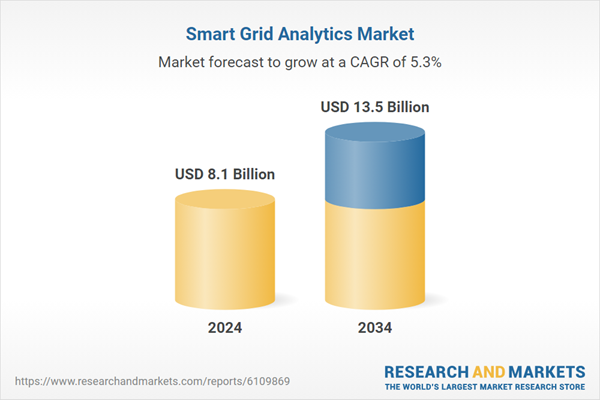The shift toward data-centric energy management systems also enables faster fault detection, predictive maintenance, and better customer satisfaction - factors crucial for grid modernization. By leveraging real-time data analytics, utilities can identify anomalies in grid behavior before they escalate into critical failures, minimizing downtime and service disruptions. These advanced systems empower energy providers to proactively maintain equipment, extend asset lifespans, and optimize load balancing across the network. In turn, this enhances the overall reliability and efficiency of power distribution.
The services segment is projected to reach USD 4.5 billion by 2034. This growth is being fueled by increasing demand for expert guidance in system implementation, consulting, and ongoing support. As digital transformation accelerates across the energy sector, organizations are increasingly turning to managed services to handle new technologies including artificial intelligence, cloud, and IoT. These services ensure seamless integration and sustained optimization, particularly in securing operations and meeting evolving regulatory standards.
AMI analytics segment is expected to grow at a CAGR of 5.2% through 2034, largely due to its benefits in improving operational efficiency, managing distributed energy resources, and supporting real-time decision-making. By leveraging detailed data from smart meters, utilities can fine-tune energy distribution, reduce downtime, and boost grid reliability. The rise in clean energy adoption and a stronger focus on sustainability continues to strengthen demand for AMI analytics, especially as regulatory bodies push for smarter energy management and customer engagement tools expand.
United States Smart Grid Analytics Market was valued at USD 2.3 billion in 2024. This momentum stems from rising investment in infrastructure upgrades, widespread deployment of smart grid solutions, and the drive to integrate renewables. Advanced analytics are becoming essential to monitor complex grid activity, enhance system efficiency, and maintain grid security in real time. Government-backed modernization initiatives and the growing use of digital tools are further accelerating the US market’s growth.
Key industry leaders include Siemens, Schneider Electric, Honeywell, and Itron, all playing a significant role in shaping the future of grid analytics. Top companies in the smart grid analytics market are reinforcing their presence through targeted acquisitions, technology investments, and strategic alliances. Many are investing in AI-powered analytics platforms and scalable cloud-based systems to help utilities achieve real-time visibility, predictive insights, and operational automation. Collaborations with utility providers enable tailored solutions that align with local regulatory demands and infrastructure challenges. Firms are also enhancing cybersecurity features and promoting interoperable systems to secure data across grid networks. Global expansion efforts are underway, with localized deployments in emerging markets to meet the growing demand for smart infrastructure.
Comprehensive Market Analysis and Forecast
- Industry trends, key growth drivers, challenges, future opportunities, and regulatory landscape
- Competitive landscape with Porter’s Five Forces and PESTEL analysis
- Market size, segmentation, and regional forecasts
- In-depth company profiles, business strategies, financial insights, and SWOT analysis
This product will be delivered within 2-4 business days.
Table of Contents
Companies Mentioned
- Accenture
- Anritsu
- Capgemini
- Ericsson
- GE Vernova
- Hive Power
- Honeywell
- IBM
- Itron
- Kamstrup
- Landis + GYR
- Oracle
- SAP
- Schneider Electric
- Sentient Energy
- Siemens
Table Information
| Report Attribute | Details |
|---|---|
| No. of Pages | 121 |
| Published | June 2025 |
| Forecast Period | 2024 - 2034 |
| Estimated Market Value ( USD | $ 8.1 Billion |
| Forecasted Market Value ( USD | $ 13.5 Billion |
| Compound Annual Growth Rate | 5.3% |
| Regions Covered | Global |
| No. of Companies Mentioned | 16 |









